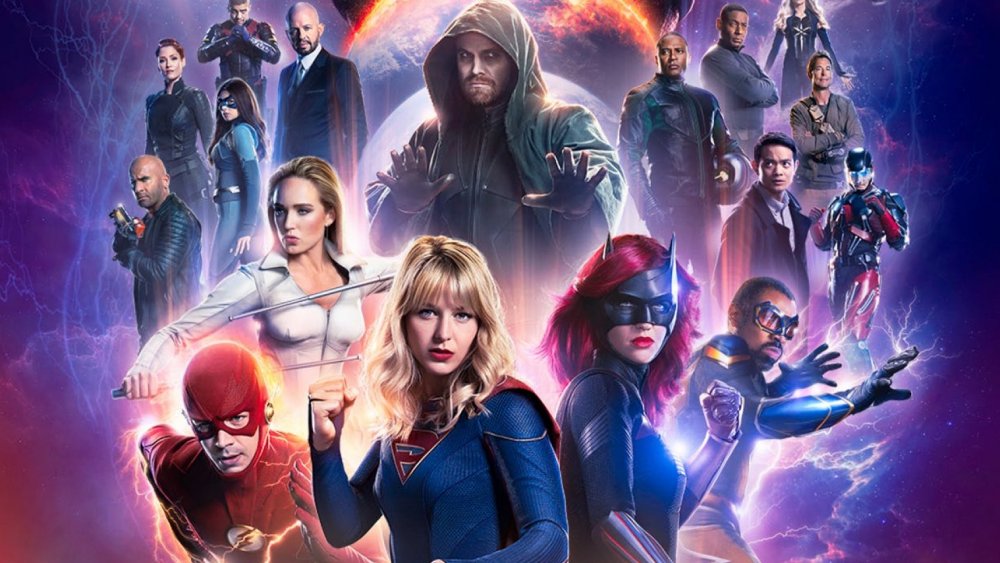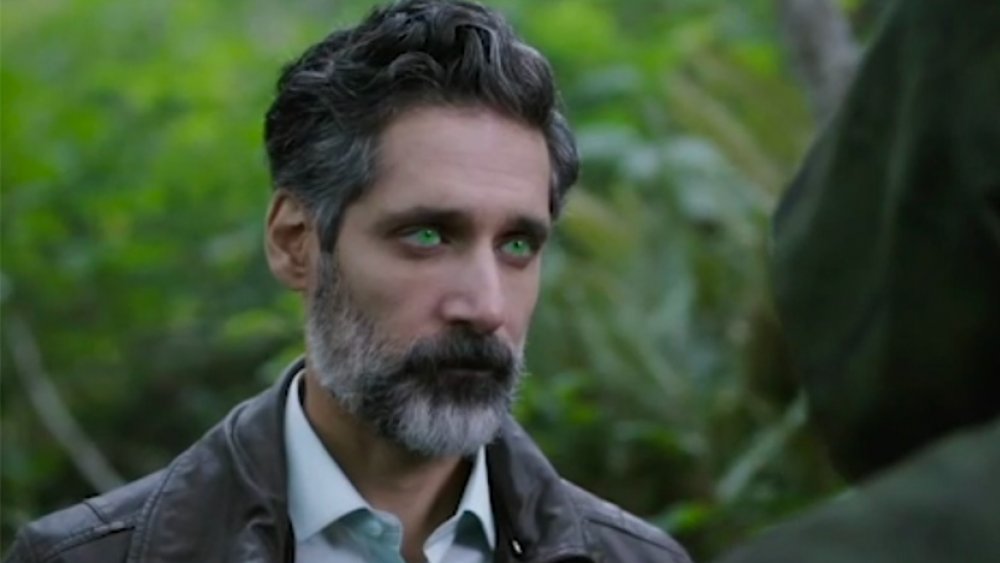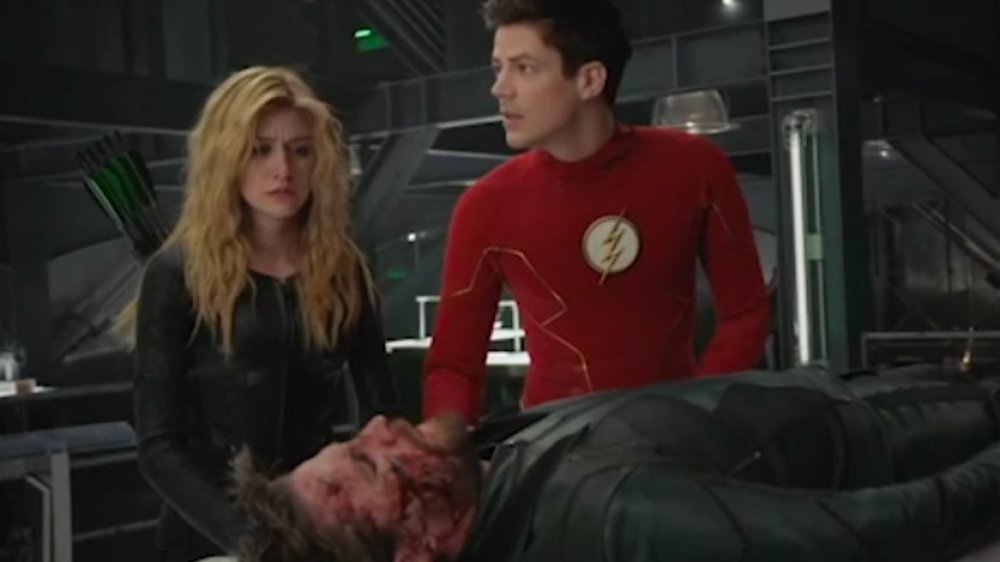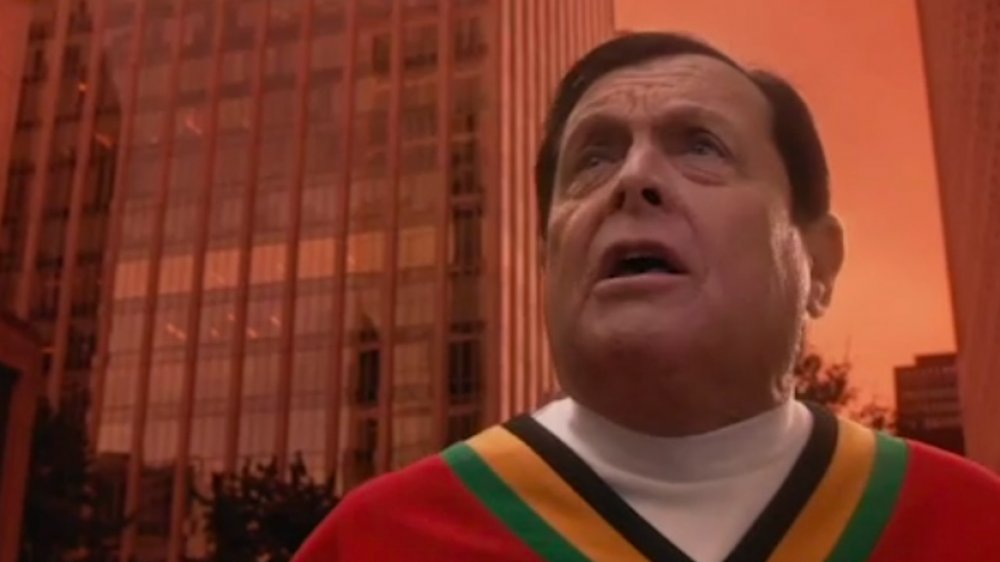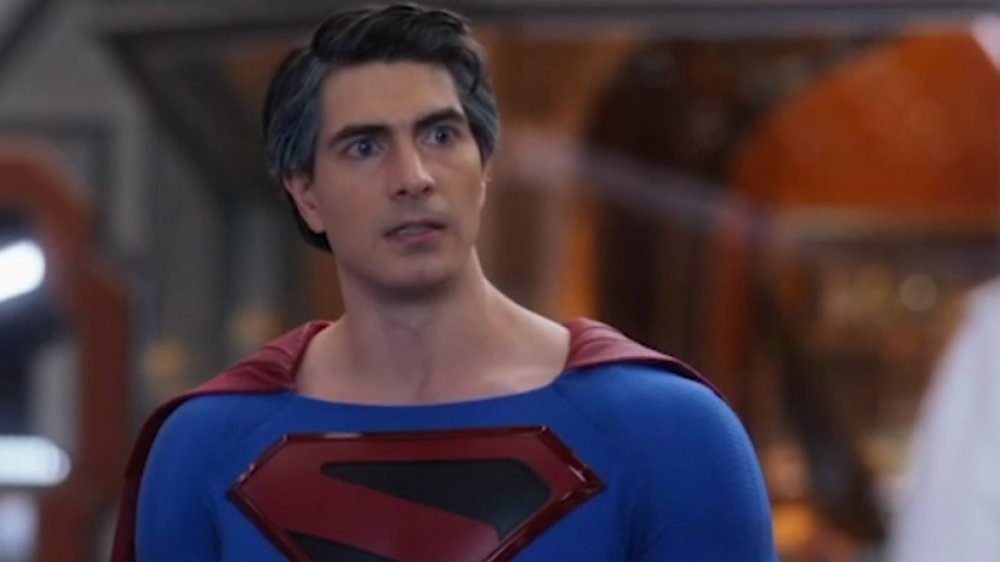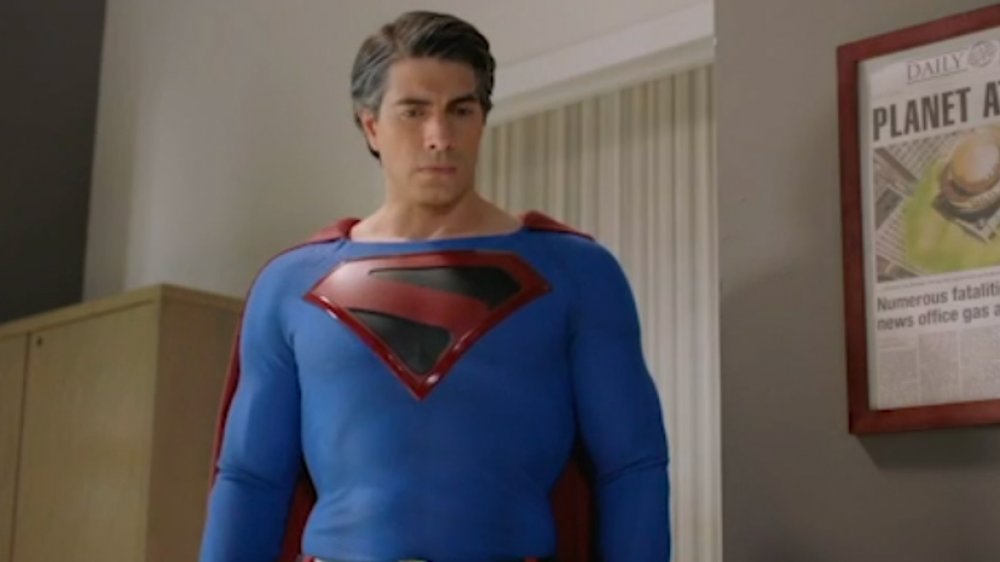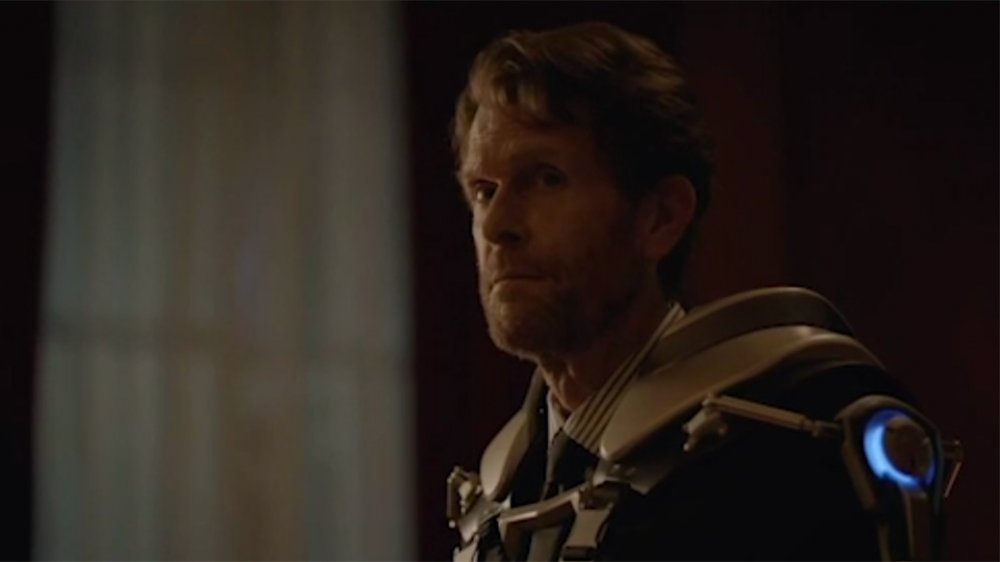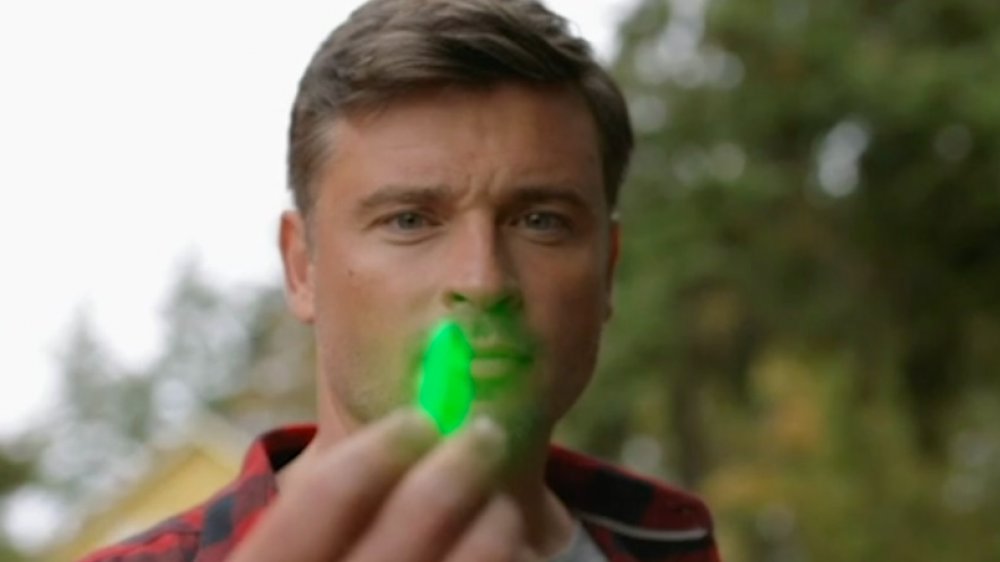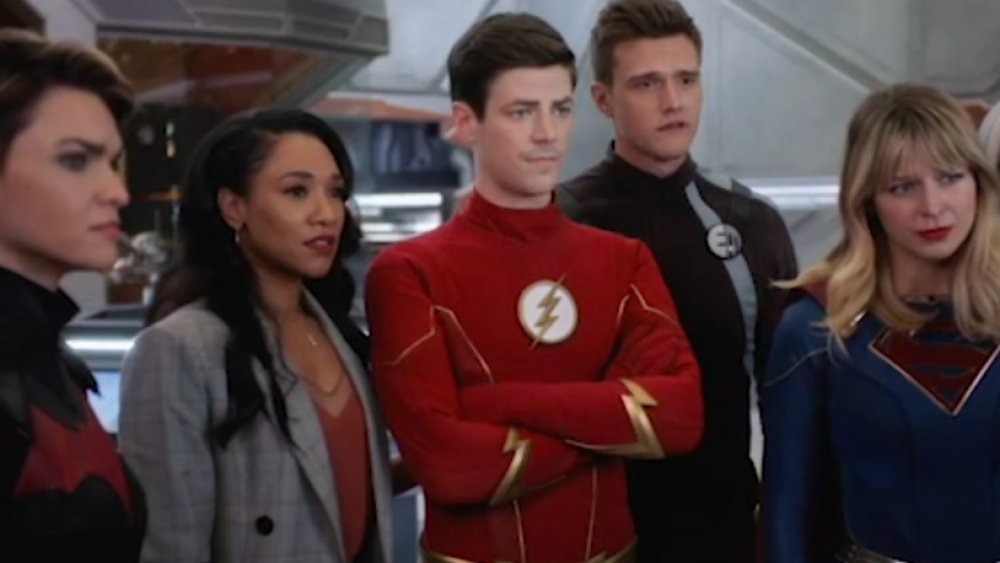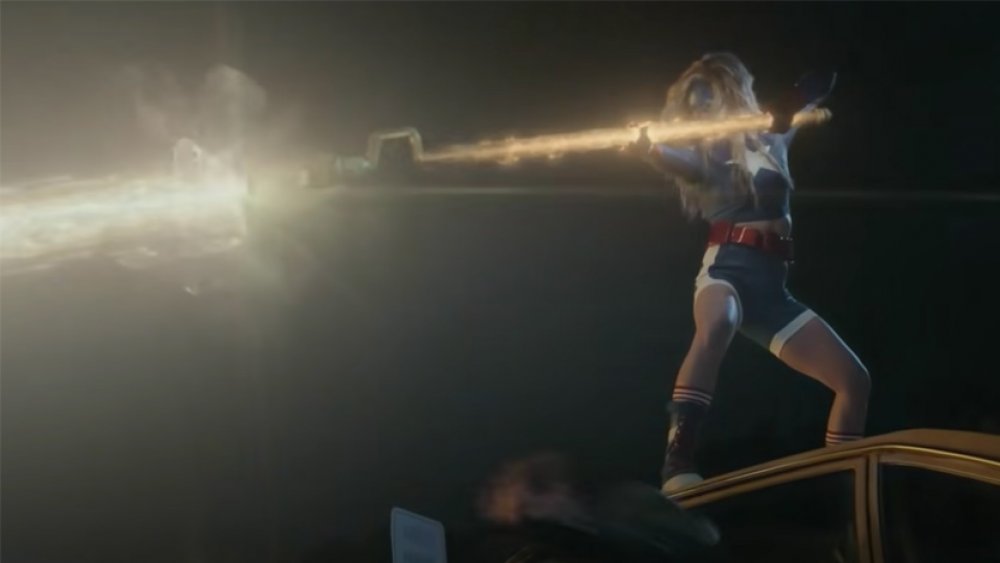Confusing Moments In Crisis On Infinite Earths Explained
Like the world-shattering 1985 comic that inspired it, the CW's Crisis On Infinite Earths crossover event is a monumental undertaking, bringing virtually every aspect of its television multiverse into play and letting viewers know that everything is in danger. Worlds lived, worlds died, and the Arrowverse will never be the same — partly because Arrow itself is coming to an end after this one last epic adventure.
Because of that grand scale of towering stakes and universal danger, the CW's Crisis also shares another quality with its comic book counterpart: it's ridiculously complicated. By the time it gets to its final parts, we've seen parallel Earths, time travel, the dawn and destruction of the universe, and cameos from the past 54 years of television inspired by DC Comics. If all that left you a little confused, don't worry! You're not alone. The good news is that we're here to sort out a few of its more convoluted aspects and explain just what was going on — and why.
Who the heaven is Jim Corrigan?
Let's start off with one of the biggest mysteries of the CW's Crisis: who exactly is this guy who shows up in Purgatory and bestows seemingly unfathomable cosmic powers on Oliver Queen? On the show, he identifies himself as Jim Corrigan, the Spectre, but if you haven't had your nose buried in DC Comics for the better part of your life, that probably didn't answer any questions.
Despite being a relatively obscure character — especially when compared to folks like Supergirl, the Flash, and even the lesser known Legends of Tomorrow standards like the Atom and Firestorm — the Spectre is a favorite for this kind of world-shattering event. Why? Because he's the Wrath of God. Literally. He's less of a person and more of a force of nature, a vessel for divine fury with the kind of cosmic power that makes Superman look like Jimmy Olsen. Unfortunately, it turned out that turning God's vengeance into a person without any mitigating force led to, well, exactly what you'd expect from a being of unlimited power defined only by rage. It's sort of like the Hulk, but with more rains of blood and plagues of frogs, that sort of thing. In one of the more interesting comic book twists on Biblical imagery, the Spectre was so destructive that he had to be confined to Limbo from 1 CE to 33 CE, because the spirits of Vengeance and Forgiveness could not walk the Earth at the same time.
In order to temper his vengeance — and create a new superhero in 1940 — the Presence bound the Spectre to Jim Corrigan, a cop who was murdered by criminals, returning him to life as a ghostly superhero. Eventually, Corrigan worked off enough of his sins that he was allowed to move on to his final reward, and the "Spectre Force" was passed down to others. After dying as a supervillain, Green Lantern Hal Jordan was the Spectre for a while, and then Gotham City detective Cris Allen was drafted into the job after his own murder. It's never been handed off to Oliver Queen in the comics, though, although the fact that both characters wear costumes built around green hoods makes the shift in wardrobe an easy one.
So is Oliver really dead?
Most heroes only get one chance to sacrifice their lives to save the world. Oliver Queen got two — once as Green Arrow, fighting to the death against the Anti-Monitor's army of shadows, and then again as the Spectre, seemingly sacrificing his own life to end the threat to the multiverse. Unfortunately, the Anti-Monitor's death didn't really stick, so that raises the question: is Oliver really dead?
The answer, most likely, is a frustrating one: yes and no. Oliver's definitely dead — he's the Spectre, after all, and as the name implies, the Spectre is quite literally a ghost. That said, as far as superheroes are concerned, there's dead and then there's dead, and neither one of those is a permanent state.
The real question is whether Oliver Queen is still going to be around in his new phantasmal form, and the answer to that is "probably." If he's the Spectre, that means he's beyond the traditional boundaries of life and death, meaning that he has a pretty good chance of coming back as the driving force of a future CW crossover, if Stephen Amell ever gets bored with whatever he's going to do after eight seasons of Arrow. Our guess, incidentally, is that he's going to turn to full-time pro wrestling and sign up with AEW. Stranger things have happened... like, say, a show about Green Arrow running for eight years.
Earth-89? Earth-66? Earth-75?
One of the major selling points for the CW Crisis — and one of the things that made it feel so big — was that it included nods to the entire history of the films and television shows based on DC Comics. Some, like the Smallville scene or the visit to Earth-99, were pretty relevant to the plot, but others were basically just cameos, and they might've gone by too fast for viewers who don't have vast portions of Who's Who in the DC Universe memorized to keep up with.
Needless to say, this is another reference to the original Crisis on Infinite Earths comic, which also opens with the destruction of a handful of DC's long-standing parallel worlds, complete with the red skies and fade to white that we saw there. While the comic started off by obliterating Earth-3 (where good guys were bad and vice versa), the show opens up with two incarnations of the Dark Knight being wiped out of existence: Earth-89 and Earth-66.
This sets the trend of Earths inspired by TV shows and movies mostly being named after the years that they debuted, much like Supergirl being on Earth-38 — the year of Superman's first appearance. Perhaps a little surprisingly, neither of the ones we open with actually show us that world's version of its main character, Batman. On Earth-89, we catch up with intrepid reporter Alex Knox (Robert Wuhl) and Danny Elfman's classic score, letting us know we're in the world of the Tim Burton Batman film. After that, we skip over to the decidedly retro Earth-66, where Burt Ward appears with a color scheme (and a distinctive exclamation) that let us know we're seeing the Robin of the classic Batman TV series. It would've been nice to see the Dynamic Duo back together again, but sadly, Adam West died in 2017.
There are a few notable exceptions to the year rule, though, and you might be wondering why we see a Superman killed by Lex Luthor on Earth-75, or why the Huntress was running around on rooftops on Earth-203. The latter is just dropping out a number — the Birds of Prey series in which Ashley Scott starred finished its single season back in 2003. For the former, it's actually a reference to a single comic. The shot of Superman and Lois that we see on the news is lifted from 1994's Superman #75, the climax of the famous "Death of Superman" story in which the Man of Steel was killed by Doomsday. Why that one wasn't just Earth-94, we may never know.
Why does the Superman of Earth-96 look so familiar?
When the Superman of Earth-96 joins up with the crew, there are a few jokes made about how weird it is that he looks exactly like Ray Palmer, although no one ever bothers to give a reason why. The reason for that, obviously, is that both characters are played by Brandon Routh, and you probably already know the reason for that decision. It wasn't all that long ago, after all, that Routh starred as the Man of Steel in 2006's Superman Returns.
The movie is not great, and the Superman films were rebooted only seven years later with Henry Cavill in Man of Steel, but Routh himself made for a great Superman. Getting him to suit back up in the part was a nice way of giving him a second chance, and making a change from everyone constantly dunking on the earnestly wholesome Ray Palmer.
That leaves us with the question, though: with so many of the parallel Earths being named for the year of their inspiring media, why is he on Earth-96 and not, say, Earth-78, or evenn Earth-06? The answer is that Routh is actually playing an amalgamation of a couple of different versions of Superman.
Okay, then who is Superman-96?
For starters, we have a couple of clues that Superman-96 is meant to be the same Superman played by Christopher Reeve in the Richard Donner Superman film from 1978 and its three sequels. That's nothing new for Routh; Superman Returns was also meant to pick up after Superman II, ignoring the last two movies. It's not the only way we know, though. When he sees Lois, we get a brief excerpt of "Can You Read My Mind," the love theme composed by John Williams for Superman '78. After being briefly mind-controlled into fighting his Earth-38 counterpart (Tyler Hoechlin), Superman-96 mentions that "this is the second time I've gone nuts and fought myself." The first, for Reeve at least, was in Superman III, when Superman is turned evil and literally splits into Clark Kent and Superman to fight himself in a junkyard. Also, sorry, but if you don't think that movie rules, you're wrong.
So if he's meant to be from Superman '78, then why is he Superman-96? Because in picking up with a future version of that character, the show is referencing Mark Waid and Alex Ross's landmark 1996 miniseries, Kingdom Come. The deaths of Lois Lane and the rest of the Daily Planet staff at the hands of the Joker are lifted from that story — the newspaper framed in his office actually has a panel from the comic as its photograph — as is the black-and-red emblem that Superman wears in mourning. Unlike his Kingdom Come counterpart, though, Superman-96 doesn't seem to have given up the Clark Kent identity and gone into retirement.
What happened to Bruce Wayne on Earth-99?
The most grim moment of Crisis On Infinite Earths, even more than watching Oliver Queen die twice, came when Supergirl and Batwoman took a visit to Earth-99. Given the name, it was easy to assume that we'd be seeing a live-action version of Batman Beyond, which premiered in 1999, especially once we found out that Kevin Conroy — the definitive voice of Batman for a generation since he got the starring role in Batman: The Animated Series in 1992 — was going to be playing that world's Bruce Wayne. Instead, we saw Conroy as version of Batman who had given up all hope and given into his darkest impulses. That's only fair, though — you spend three decades playing the best version of Batman, you might as well take a shot at playing him as a bad guy.
When we see Bruce-99, he appears to have taken an incredible amount of pain, both mental and physical, but we don't get a lot of details as to what happened. He does mention that his world's version of Kate Kane had been killed in action as Batwoman and that this was one of the things that pushed him over the edge, and Luke Fox tells Supergirl that many of his injuries are the result of his fight with Superman. That doesn't quite add up, though — in his grisly trophy room, Kara sees Clark's glasses, shattered and covered in blood. If Superman had his glasses on when Batman took him out, that means that it was an ambush, and that the Man of Steel likely didn't have time to fight back.
Instead, we can probably find the answer in the scene's comic book inspiration. Like Superman-96, Bruce-99 takes his look from Kingdom Come, where he's depicted wearing a similar exoskeleton. In their annotations to that story, Waid and Ross told readers that there was no single event that caused this level of injury, and that it was just the toll of years and years of getting in multiple fistfights with murder-clowns, crocodile monsters, and killer snowmen every single night. It stands to reason that if Batman turned to more lethal solutions to his problems, those fights could turn even more brutal, leading to the worn-down, hopeless ex-Batman that we see on the show.
How did Smallville Clark lose his powers?
Henry Cavill and Brandon Routh had the part on the big screen, but if you're looking for the actor who owned the role of Superman for a generation of fans, then it kind of has to be Tom Welling. Pound for pound, he played the Last Son of Krypton more than anyone else, starring in ten seasons of Smallville. The thing is, if you want to get technical about it, he never actually played Superman; he was only ever Clark Kent. The entire purpose of the show was to chronicle Clark's life before he was Superman. That premise was stretched pretty far by the time Smallville ended its decade-long run — Clark moved to Metropolis, fought Doomsday, died, came back to life, traveled to the 31st century, and formed the Justice League, all while he was "the Red-Blue Blur" — but it was part of the show's premise from day one.
As a result, it makes sense that when the heroes of the Arrowverse caught up with Smallville's Clark on Earth-167, he still wasn't Superman. Much to Lex Luthor's unabashed disgust, Clark had actually given up his powers to focus on starting a family with Lois. The question, then, is what happened?
This particular plot point seems to be loosely inspired by Alan Moore and Curt Swan's Whatever Happened to the Man of Tomorrow, the final Superman story before the end of the original Crisis on Infinite Earths comic. In that story, it was revealed that Superman gave up his powers by exposing himself to Gold Kryptonite, which permanently strips Kryptonians of their metahuman abilities. It's pretty safe to assume that Smallville's Clark did the same — Gold K was introduced in that show's final season with the same properties that it has in the comics. Given his long journey as a reluctant hero, it's easy to think that at some point in the ten years since the end of the show, he'd retire back to his hometown, even if it's pretty difficult to imagine Lois Lane choosing to live on a farm. Maybe she commutes?
What's up with Earth-Prime?
The major effect of the comic book Crisis on Infinite Earths was that it streamlined DC's comic book multiverse — which had spread out over a grip of worlds like Earth-2, Earth-3, Earth-X, Earth-C, Earth-C-Minus, and so on — into one single unified whole. The TV version has done the same, codifying the main CW shows into one cohesive Earth-Prime.
It makes sense that they would, too. One of the reasons that DC had such a convoluted multiverse is that unlike their competition down the street at Marvel, where the universe and many of its core characters had been created by a relatively small group of people, and largely focused on a single location, the DC universe was much more of a patchwork. The characters had mostly been created in isolation, sometimes by different publishers who were acquired by DC after the fact. The same goes for the shows — Arrow came first and spun off directly into Flash, Legends of Tomorrow, and Batwoman, but Supergirl originally aired on CBS, and was completely separate from the CW shows until a crossover established it as a parallel world. Black Lightning started off on the CW, but it was set in a different universe in hopes of establishing its lesser-known hero outside of the shadow of the other characters.
With Supergirl, Flash, Batwoman, Legends of Tomorrow, Black Lightning and the last few episodes of Arrow now combined into the newly christened Earth-Prime, there's a shared history there, creating a world where all the characters exist alongside each other. In other words, after eight years of Arrow, we finally have a world where Superman and Batman coexist with the other heroes, finally making the DC TV universe feel whole, and where a live-action TV version of the Justice League can exist. Without the hassle of having to write a world-shattering interdimensional crossover, it's likely that we could see more instances of the shows crossing over in the future — it's a lot easier to have the Flash hang out with Supergirl when he doesn't have to vibrate to a parallel world after all.
So what happens to the Multiverse?
The DC Multiverse has been a big part of the CW shows for a while now. It's been at the center of the crossovers that have become an annual tradition. A major character on Flash — Harrison Wells — is built entirely around swapping out with his own interdimensional counterparts every now and then, forcing poor Tom Cavanagh to do a new accent every couple of months while ostensibly playing the same guy. It's one of the most distinctly "comic book" things about the whole enterprise. With that in mind, it seems like the shows would be giving up a lot of potential stories with everything combined into the new Earth-Prime.
The thing is, unlike the comic, they didn't actually ditch the idea of the Multiverse. The main CW shows have all been added to a single Earth, with the in-story reason being that they're the homeworlds of the seven "Paragon" characters who saved the entirety of existence, but there are plenty of other worlds out there. In addition to confirming that the DC films are a part of this multiverse through a surprise cameo from Ezra Miller, it also preserves some of the other shows. The shows streaming on DC Universe make it through, with Earths 9, 19, and 21 being established as the settings for Titans, Swamp Thing, and Doom Patrol, respectively. Earth-96 is shown to survive with Brandon Routh's older Superman, and in a surprising bit of foreshadowing, we also see Earth-12, hinted at being the setting for HBO Max's upcoming Green Lantern show. We can also assume that the worlds of Batman '89 and '66 and Smallville are still out there somewhere, too.
For longtime comic book readers, the most interesting reveal might be the all-new Earth-2, which will be the home of the upcoming Stargirl show. In the comics, Earth-2 was the home of the original Golden Age heroes of the Justice Society of America, who debuted in the '40s, and, as time went on, their descendants. Stargirl herself was a reimagining of one of those Earth-2 characters, the Star-Spangled Kid, and with the show drawing on the histories of JSA characters like Wildcat and Doctor Mid-Nite, setting it there makes a lot of sense. It allows her world to have a different history with superheroes, playing into the idea of legacy that's so core to her character, without interfering with the new "history" of Earth-Prime.
It's also a little ironic. The original Crisis is largely known as the crossover that got rid of Earth-2 in the comics. Now, the TV version is the one that introduced it to a whole new generation.
